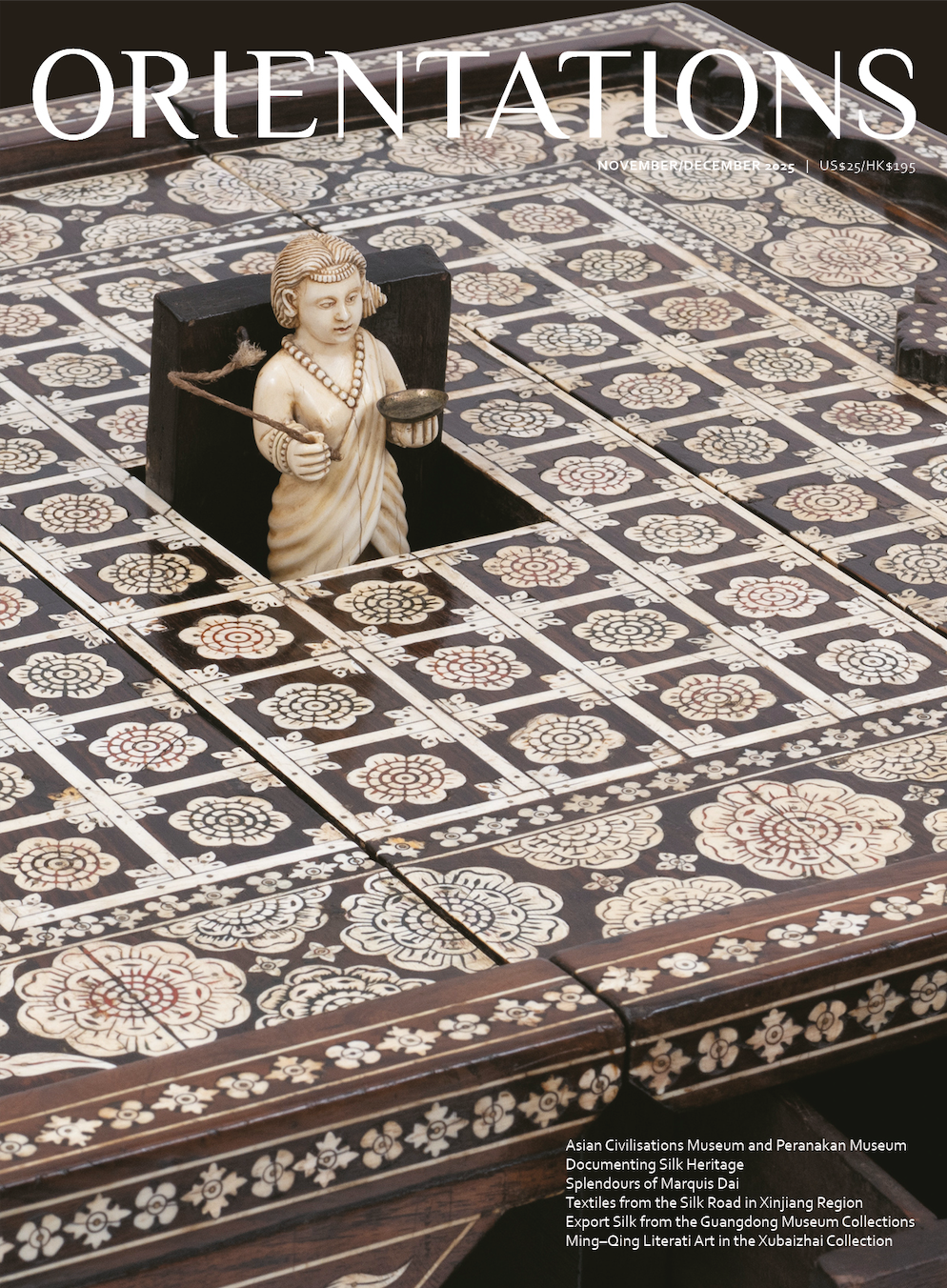 Image 1 of 1
Image 1 of 1


NOV/DEC 2025
This issue spotlights Singapore’s Asian Civilisations Museum (ACM) and Peranakan Museum (PM). With Clement Onn, the new director of both museums, we explore how three new exhibitions engage communities. The first, ‘Let’s Play! The Art and Design of Asian Games’ at the ACM, looks at the development, transmission, and design of board games in Asia and their role as metaphors for life, tools of diplomacy, and expressions of power and status. The second, ‘Elegant Sounds: Music, Craft, and the Literati’, also at the ACM, traces the qin’s development, symbolism, and manifestation over centuries. Lastly, ‘Peacock Power: Beauty and Symbolism Across Cultures’ at the PM, explores how the image of peacocks embodies the complexities of Peranakan communities.
The second part of the issue presents research on textiles related to ‘A Comprehensive Collection of Chinese Silks’, a collaborative publishing project with Zhejiang University Press and eighty institutions globally, led by Professor Zhao Feng from the School of Art and Archaeology at Zhejiang University. The project is a systematic survey of major Chinese textile holdings around the world, with each volume focusing on one specific museum. There are also plans to develop an online database to make Chinese silk art more accessible to all.
We present Ming and Qing literati paintings from the Xubaizhai Collection in the Hong Kong Museum of Art through a creative approach that explores dichotomies such as court versus countryside, advance versus retreat, and Confucianism versus Buddhism.
With the assistance of an enthusiastic reader and the help of the Turkish Embassy in Washington, D.C. I was able to make contact with Ömür Tufan, archaeologist and chief curator of the Department of Far Eastern (Chinese and Japanese) and European Porcelain Collection and Tableware Collection at the National Palaces–Topkapi Palace Museum. I had the pleasure of meeting him this summer and hearing about the opening of a new National Palaces Porcelain Museum in the old Imperial Mint.
This issue spotlights Singapore’s Asian Civilisations Museum (ACM) and Peranakan Museum (PM). With Clement Onn, the new director of both museums, we explore how three new exhibitions engage communities. The first, ‘Let’s Play! The Art and Design of Asian Games’ at the ACM, looks at the development, transmission, and design of board games in Asia and their role as metaphors for life, tools of diplomacy, and expressions of power and status. The second, ‘Elegant Sounds: Music, Craft, and the Literati’, also at the ACM, traces the qin’s development, symbolism, and manifestation over centuries. Lastly, ‘Peacock Power: Beauty and Symbolism Across Cultures’ at the PM, explores how the image of peacocks embodies the complexities of Peranakan communities.
The second part of the issue presents research on textiles related to ‘A Comprehensive Collection of Chinese Silks’, a collaborative publishing project with Zhejiang University Press and eighty institutions globally, led by Professor Zhao Feng from the School of Art and Archaeology at Zhejiang University. The project is a systematic survey of major Chinese textile holdings around the world, with each volume focusing on one specific museum. There are also plans to develop an online database to make Chinese silk art more accessible to all.
We present Ming and Qing literati paintings from the Xubaizhai Collection in the Hong Kong Museum of Art through a creative approach that explores dichotomies such as court versus countryside, advance versus retreat, and Confucianism versus Buddhism.
With the assistance of an enthusiastic reader and the help of the Turkish Embassy in Washington, D.C. I was able to make contact with Ömür Tufan, archaeologist and chief curator of the Department of Far Eastern (Chinese and Japanese) and European Porcelain Collection and Tableware Collection at the National Palaces–Topkapi Palace Museum. I had the pleasure of meeting him this summer and hearing about the opening of a new National Palaces Porcelain Museum in the old Imperial Mint.
